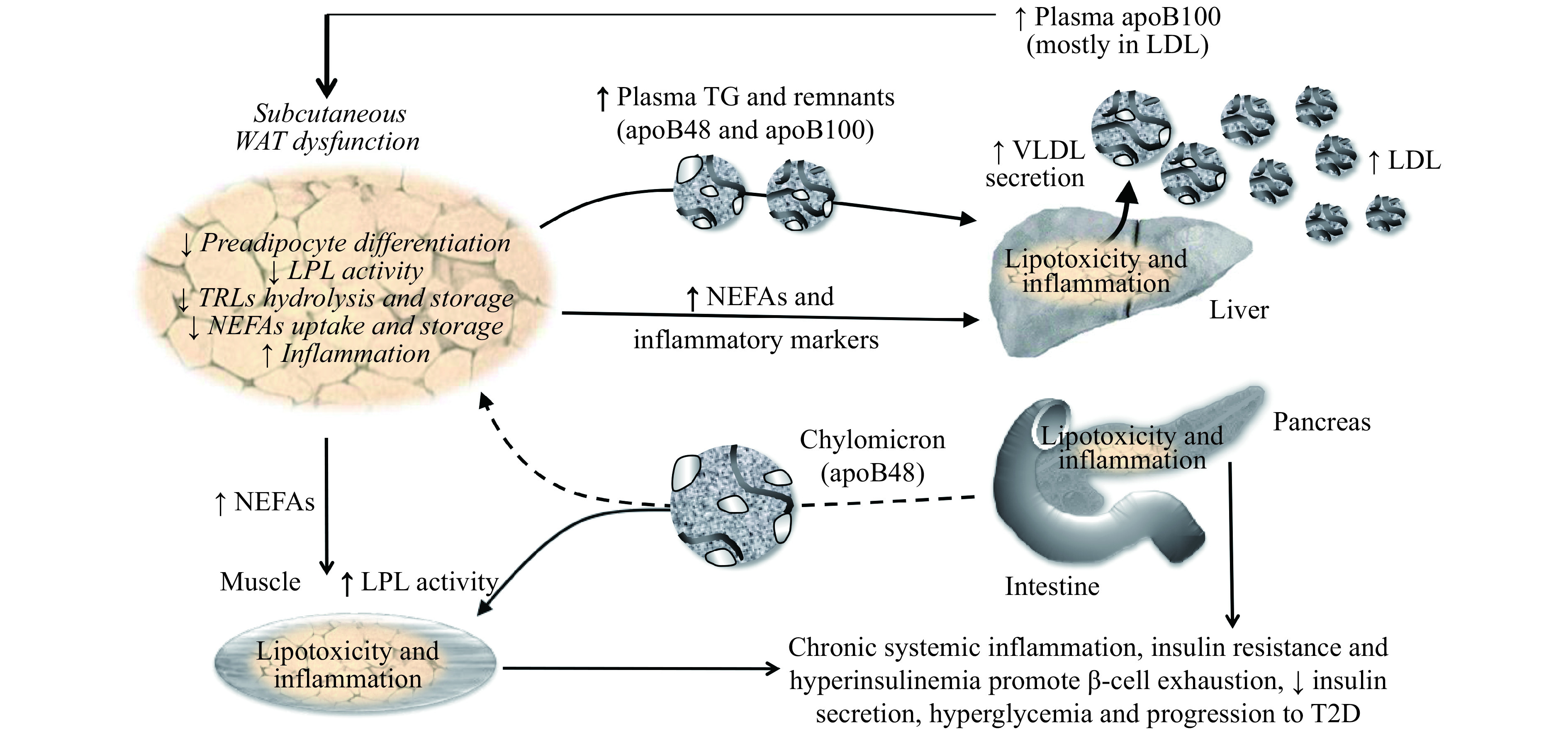1. Higher plasma LDL promotes subcutaneous WAT dysfunction and related risk factors for T2D.

A positive feedback loop exists between WAT dysfunction and elevated plasma apoB that fuels the accumulation of risk factors for T2D, namely WAT dysfunction and inflammation, delayed postprandial plasma clearance of TGs and NEFAs, IR, compensatory hyperinsulinemia and chronic systemic inflammation. Over time, this loop favors β-cell exhaustion, reduced insulin secretion, hyperglycemia and progression to T2D. Solid lines represent activation and dashed lines represent inhibition. Italic text represents reported effects of native LDL on adipocytes and human WAT from our lab. WAT: white adipose tissue; LDL: low-density lipoprotein; VLDL: very-low-density lipoprotein; TRLs: triglyceride-rich lipoproteins; NEFAs: non-esterified fatty acids; LPL: lipoprotein lipase; T2D: type 2 diabetes.
